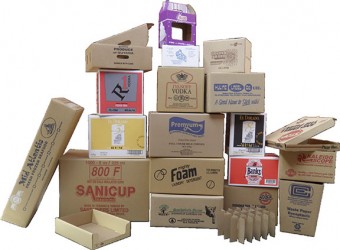Caribbean Container Inc (CCI), the only enterprise in the Caribbean Community (Caricom) that produces recycled paper says it is prepared to work with local manufacturers in providing access to affordable packaging that meets export standards.
CCI Managing Director Patricia Bacchus Stabroek Business that while CCI’s role at this time was confined to corrugated out-packaging and fibre board fitments the company had developed a wide range of packaging to cater to new and emerging local businesses. These include “ventilated fresh produce packaging (fruits and vegetables) packaging for the seafood industry (fish and shrimp boxes that can facilitate cold storage conditions) inner fitments and separators to protect bottles from rubbing against each other,” Bacchus said.
This was in response to a question raised by Stabroek Business on affordable packaging that arose out of this newspaper’s interview with the Managing Director of the Jamaican product promotion firm Prism Communications Beverley Hirst.

Patricia Bacchus
In addition to these services Bacchus said, CCI would also work with producers in art work and logo building as well as in “design and conceptualization work associated with startup businesses.”
Bacchus said CCI had the capacity to build custom-designed packages specifically for the intended product, “so that lighter weight products use a lower ‘test box’ while heavier boxes use heavier ‘tests’ to ensure that that the cost of packaging is reflective of its application and that entities can access “the most affordable packaging based on their needs… Our policy for small, startup businesses is to facilitate their access to proper packaging as far as feasible and to offer technical support on the most cost-effective options available.”
The CCI boss said the company was also prepared to work with entities unable to place orders for large quantities of custom-built and custom-printed packaging by making available unprinted stock boxes and can cater to a variety of applications and weight support requirements.
And addressing the issue of challenges facing small manufacturers who are “unable to sustainably meet the cost of packaging Bacchus said that from a consumer perspective, a product entering a new market depends heavily on product placement through presentation. “This ranges from the quality of bottling and labelling, to outer packaging, which, if good, creates a first impression that the product is good.

From a wholesale customer perspective (whether it be hotel chain or supermarket) the quality of packaging as it relates to the sanctity of bottles and caps, to the sturdiness of outer packaging (boxes, bags, etc) is of paramount importance. Issues such as spoilage and damage prevention is mitigated by proper packaging,” Bacchus said. “Most of these external prospective markets have ISO certified entities, requiring certain standards to be met for the products they distribute or sell,” she added.
At last week’s Prism Communications seminar much of the discourse centred around the hurdle of high costs confronting local producers whose focus is on accessing North American markets. While Bacchus conceded that the cost of packaging was “an impediment” for small manufacturers it may be a chicken and egg situation for those entities since, “unless the investment is made to ensure certain critical packaging requirements are met, they may never be able to place their product advantageously.” She said that while the consideration of cost raises the issue of financing this is becoming more accessible in the fashion of small business loans and grants.
Apart from the product promotion dimension to high-quality packaging and labelling local manufacturers with export ambitions are coming under increasing pressure from safety and health regulations being put in place in North America. These place emphasis on packaging standards that take account of the need to avoid seepage and contamination.




